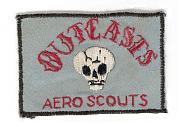Not sure who has been watching, but In From the Cold has been putting together an investigative report on the nuclear weapon mishap at Minot last year. The blog has published two in the three part series. It is a very interesting read and the kind of investigative journalism more common in the new media than in the old.
I thought it was interesting that today the Air Force blocked the blog. There is a lot talk regarding "new media" of which blogging qualifies. I think it is noteworthy the day after blogs discuss the Air Force declaring war on the other services in the upcoming budget year, the Air Force decides to declare war on what is probably the most popular Air Force blog in the states. It is obviously not a big deal, but I do get the impression it is a sign of the mindset:
When you hate the message, attack the messengers.
I have to say I continue to be underwhelmed by the Air Force PR machine. They have some of the best commercial advertisements you can find for recruiting purposes, but the service seems to trip when dealing with domestic criticism and challenges.







 Even if we had the money to spend it is a poor choice to risk airframe and pilot over hostile area or air space when all you need is a missile. Many in the Air Force understand this and if Uncle Bob hangs around long enough you may see some of them come to power and you will see a more powerful Air Force that is more useful and costs less. Aviation Week article from 2002 with quotes from Colonel Warden on how Air Force will become 90% Unmanned Combat Air Vehicles....
Even if we had the money to spend it is a poor choice to risk airframe and pilot over hostile area or air space when all you need is a missile. Many in the Air Force understand this and if Uncle Bob hangs around long enough you may see some of them come to power and you will see a more powerful Air Force that is more useful and costs less. Aviation Week article from 2002 with quotes from Colonel Warden on how Air Force will become 90% Unmanned Combat Air Vehicles....




Bookmarks